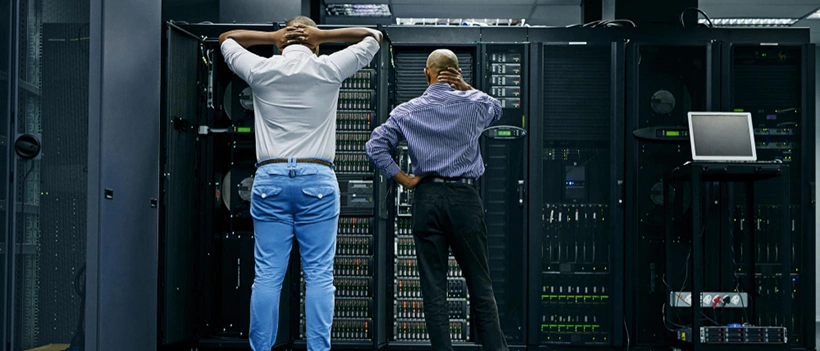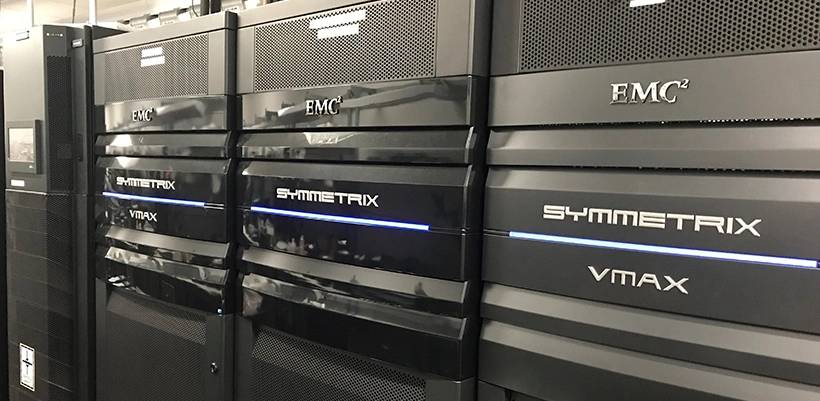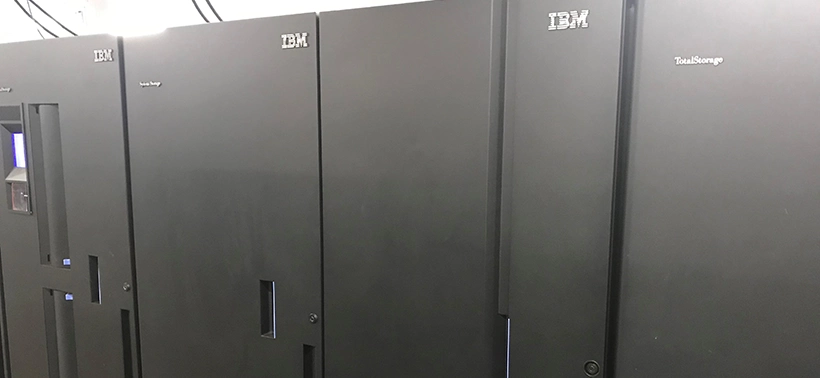What Is Data Center Redundancy? – Levels and Best Practices
Park Place Hardware Maintenance
Your data center is the backbone of your organization. Without it, everything grinds to a halt. Given how critical it is, it makes sense that many organizations work with third-party data centers to support critical servers, minimize risk, and maximize uptime.
Data center redundancy is the name of the game, but given that there are multiple redundancy models and that they are not all the same, it’s challenging to make an informed decision regarding your needs. In this post, we’ll discuss data center redundancy, redundancy design, and more.
Jump-to Section
What Is Data Center Redundancy?
Importance of Data Center Redundancy
What Is N in Data Center Redundancy Design?
Data Center Redundancy: N+1 vs. 2N
What Is 3N/2 Distributed Redundancy?
Relationship of Data Center Redundancy Level and Data Center Tiers
What Is Data Center Redundancy?
Data center redundancy is the practice of leveraging duplicated hardware – power supplies, servers, cooling systems, etc. – necessary to keep things up and running in the event of an outage, hardware failure, or disaster. In most cases, a redundant data center architecture only duplicates the most critical components. And it’s important to remember that a fully redundant design that duplicates all aspects and ensures a seamless transition in the case of an adverse event can be unreasonably expensive.
Thankfully, you don’t have to duplicate every component in your data center to guard against downtime related to outages. However, you do need to understand the various types of data center redundancy levels and design options.

Importance of Data Center Redundancy
When it comes to data center redundancy, it’s important to ensure that specific components are protected first. Power supplies are among the most critical components to duplicate. And, with the increasing frequency of natural disasters, data center power redundancy should be one of your prime concerns. Without uninterruptible power supplies (UPS) it’s impossible to operate your data center, regardless of what other systems you duplicate. In addition to UPS systems, you should also duplicate:
- Backup generators (in case of power outages)
- Cooling systems
- Individual servers (and their associated data)
Keep in mind, you can always use third party hardware maintenance on your primary AND redundant systems, but we understand that OEMs go to great lengths to instill Fear, Uncertainty, and Doubt (FUD) about using a third-party maintainer. However, using third-party support on your redundant data center systems is a no-brainer, as any perceived risks should already be mitigated by your system redundancy.
Another critical factor of data center redundancy design that can protect against regional calamities is geo-redundancy. Designing your data center components and data architecture so that a climate event or natural disaster in one country or continent won’t hault your operations can be essential to the success of your business. Geo-redundancy is a common practice among cloud service providers today, and is generally good practice for international and global companies that maintain their own infrastructure.
Data Center Redundancy Levels
When it comes to data center redundancy, there is no one-size-fits-all solution. To account for that, different data center redundancy levels have been developed. These include:
- N
- N+1
- N+2
- 2N
- 3N/2
What Is N in Data Center Redundancy Design?
Before discussing the actual data center redundancy design levels, let’s define what “N” stands for in these designations. What is N? It’s the minimum capacity needed to power or cool your data center under a full IT load. So, if your data center needs five UPS units for full operation, then N would be 5 in your case. Each data center will have an N rating that correlates to its specific power and performance needs.
It’s also important to realize that N does not account for redundancy. This is your base level of operation. If your data center’s N was five and you lost a UPS unit, you would not be able to operate at full capacity. So, N is the bare minimum needed for operation. Obviously, that’s not a tenable situation, so businesses plan beyond N when it comes to redundancy.
What Is N+1 Redundancy?
Now that you know what N stands for, it’s probably easier to understand what N+1 redundancy might refer to. It’s just increasing the number of components by one. So, if you need five UPS units to operate, an N+1 plan would give you six. That way, if one UPS unit fails, you have an extra that can kick in to pick up the slack. This applies to all types of components, though, including servers, storage hardware, HVAC systems, and generators to name only a few.

But does N+1 really work? It depends. Current design standards argue that for every four components, you should have one redundant component that can be used in the case of failure.
Of course, that still leaves some risk to your organization, which is where the next redundancy level comes in. N+2 gives you your full aggregate of components, plus two spares. However, that may still not be enough to achieve IT resiliency.
What Is 2N Redundancy?
2N redundancy is not just the next step up from N+1 – it’s an exponential increase. It mirrors your original setup, so if you had five UPS units, 2N redundancy would give you five more for a total of 10. In addition to the UPS units, you would also have two separate distribution systems so that if something happened, you could switch over without a problem.
Data Center Redundancy: N+1 vs. 2N
When it comes to redundancy, N+1 offers some coverage. However, because it only provides a single spare, there is still considerable risk that a cascading fault could mean that you cannot operate at full capacity. For a growing number of organizations, 2N is the better choice for avoiding significant data center challenges.
What Is 3N/2 Distributed Redundancy?
An option that allows you to gain near 2N redundancy by providing a buffer against cascading faults without spending a fortune to do so is called 3N/2 distributed redundancy. 3N/2 refers to a redundancy methodology where additional capacity is based on the load of the system. The three-to-make-two, or 3N/2, redundant configuration provides nearly 2N reliability with N+1 capital and operating costs. However, while it can help you save money, it still comes with additional load management challenges.

Relationship of Data Center Redundancy Level and Data Center Tiers
Data centers are usually certified by tiers – Tier 1, Tier 2, Tier 3, and Tier 4. How do these data center tiers correlate with data center redundancy levels?
It’s more about data center uptime and availability than it is about a specific N rating. For instance, tier 1 data centers have 99.671% uptime, while tier 4 data centers have 99.995% uptime per year. If a certain level of data center redundancy can help deliver on uptime guarantees for any given tier, then it becomes relevant to the relationship.
Approach Uptime, All the Time with the Right Partner
The right partner can help you avoid costly downtime on all fronts of your IT operations. Whether through IT infrastructure management services, self-operated enterprise network performance monitoring software, or 3rd party hardware maintenance services – Park Place Technologies can help you achieve uptime, all the time.
Contact our team today to explore the full portfolio of services that our data center and networking optimization firm provides to help your IT team do more with less.



